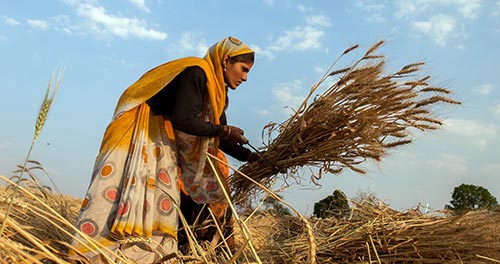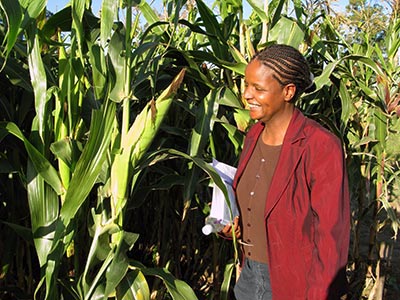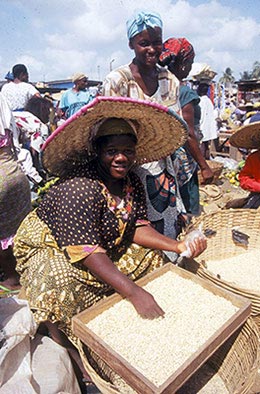
Nearly 40 years after the United Nations established March 8 as International Women’s Day, we have seen great progress in achieving equality for women – there is greater parity in primary education between boys and girls, maternal mortality has declined by around two-thirds and 4 of every 10 jobs in the non-agricultural sector are held by a woman. However, despite a push through the Millennium Development Goals, gender equality and the empowerment of women still have not been achieved. Women continue to face discrimination in access to economic assets, work, education, health care and political participation. As a result, women are more likely to live in poverty, have less access to finance and information and fewer opportunities to break free from this cycle, especially in agricultural sectors.

At CIMMYT, we are working hard to close the gender gap and generate gains in agricultural output, food security, economic growth and social welfare. Across our projects in Africa, Asia and Latin America, CIMMYT actively seeks women’s participation in breeding and seed sector development, the value chain and agricultural mechanization. CIMMYT is working to integrate gender into the project design cycle and into project implementation. Both the CGIAR Research Programs on MAIZE and WHEAT have an approved gender integration strategy and in 2014 and 2015 all CRPs will jointly conduct a cross-gender study.

Women are the backbone of the rural economy in the developing world; they constitute much of the agricultural labor force but receive only a fraction of the land, financial credit and training compared to men. The gender gap in agriculture imposes costs not only on women themselves, but on their families, society and the sector as a whole. The FAO estimates that if women had access to the same resources as men they could increase yield on their farms by 20 to 30 percent and would spend this additional income on improving the health, nutrition and education outcomes of their children. If women had equal access to resources, agricultural production in developing countries would be 2.5 to 4 percent greater, feeding up to 150 million more people.
These are important achievements, but the job is not yet done and CIMMYT must place even more emphasis on gender and diversity. Promoting equal access to resources, improving gender awareness in CIMMYT projects and involving women in decision-making at all levels can help to close the gender gap in agriculture. This March, let us look for new avenues to empower women and think about how our interventions empower men and women alike.
How it all Started
In 1908, 15,000 women took to the streets demanding better working conditions, shorter working hours and better pay as part of a garment workers’ strike in New York City. Inspired by these events, International Women’s Day was first celebrated in 1911 with more than 1 million men and women attending rallies across Europe. By World War I, International Women’s Day became a tool for protest. In 1917, Russian women began a strike for “bread and peace,” demanding an end to food shortages and an end to the war. They initiated the February Revolution, the first of two Russian revolutions. The women’s protest started on March 8. Since it was born out of the socialist movement, International Women’s Day was subsequently celebrated chiefly in communist and socialist countries. However, in 1977 the U.N. General Assembly adopted a resolution declaring March 8 a United Nations Day for Women’s Rights and International Peace.
For more information:
http://www.internationalwomensday.com/
http://www.un.org/en/events/womensday/history.shtml
http://www.genderinag.org/content/gender-agriculture-sourcebook
 Gender equality, youth and social inclusion
Gender equality, youth and social inclusion